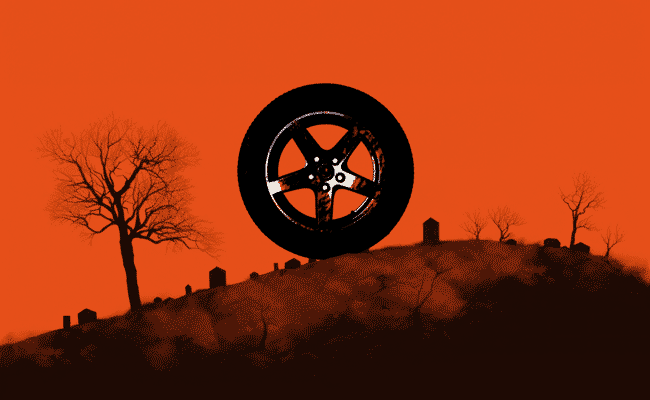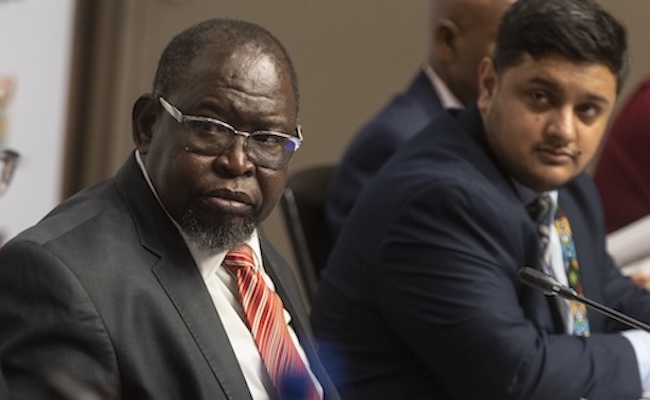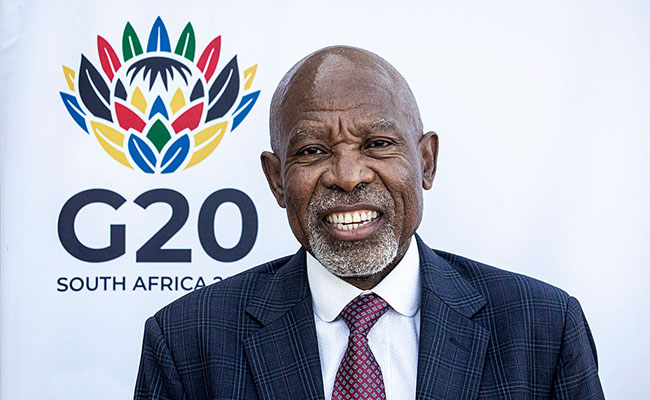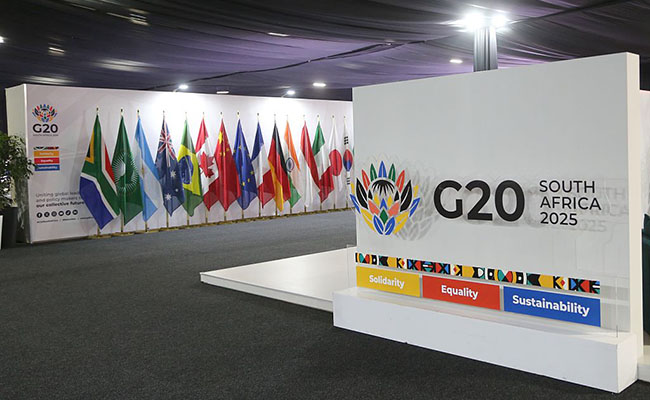When 23-year-old engineering graduate Siphesihle Mati packed her bags for Kariega three years ago, she thought she had found a foothold in South Africa’s embattled economy. A graduate programme at Goodyear’s tyre plant promised stability, skills and a career in manufacturing.
Now she is preparing to return to her parents’ home in Mthatha. The decision by the world’s third-largest tyre-maker to close its plant in the Eastern Cape town formerly known as Uitenhage after 78 years has thrown more than 700 workers out of jobs, another blow to the province’s economy and the country’s industrial base.
“With the package, I can pay off my car,” she says. “I don’t have children, but it still feels like starting from zero. I’ll survive, but I didn’t expect to be a burden on my family again so soon.”
Her story reflects a deeper malaise: South Africa is losing factories faster than it can replace them, with GDP growth averaging less than 1% over the past 10 years. The manufacturing industry has shrunk in five of the eight years through 2024, making it smaller than it was in at least 2015. The number of overall manufacturing jobs has declined by 16% since 2008 to 1.67-million, less than 10% of the country’s active workforce.
For decades, the Kariega factory supplied tyres to local and international markets and anchored livelihoods in Nelson Mandela Bay. But this month, Goodyear’s Akron, Ohio-based parent said it would shut down South African operations as part of a global restructuring to focus on profitable markets.
The company cited efficiency and cost pressures. Union leaders, however, blamed something else: the government’s failure to curb cheap tyre imports and stabilise the energy and logistics systems, with bottlenecks at ports and dysfunctional railways that underpin industry.
The National Union of Metalworkers of South Africa (Numsa) argued the plant was still viable. But Goodyear refused to open its books, instead tabling a severance offer of R50,000 per worker plus two weeks’ pay per year of service – a deal the union called an insult.
After tense talks, Numsa forced the company to double severance to four weeks per year of service and secured a R100,000 lump sum. For 355 employees, that means payouts averaging R500,000. Long-serving workers will receive more than R1m each, and 17 fixed-term contractors were unusually included in the package.
“This is not a celebration, but at least workers won’t be left destitute,” Numsa general secretary Irvin Jim tells Currency. He adds that the Industrial Development Corporation (IDC) has expressed interest in buying the plant, provided a strategic partner can be found.
Exploring options for a deal
Numsa also won a two-month freeze on the sale of the plant’s assets, creating space to find an investor before the machinery is stripped and sold. The department of trade, industry and competition and IDC are exploring options.
The IDC is acutely aware of, and monitoring, the challenges facing the local tyre industry, including Goodyear,” says spokesperson Tshepo Ramodibe. He confirms there have been “initial engagements” on efforts to save jobs and preserve “industrial capacity at this critical automotive asset”.
It is still too early to determine the nature or extent of the IDC’s role, “if any”, in addressing the company’s difficulties, Ramodibe adds.
But Goodyear has already made clear it will not allow its technology to be used by a new operator, limiting prospects for a straight continuation of tyre production. “We blame import dumping for undermining this plant,” Jim says, warning that without tariffs and stricter procurement laws, other factories will follow.
For many employees, the payouts cannot compensate for lost livelihoods.
Gladys Prince, 55, spent 32 years as a fitter. Her children are grown, but she worries for her younger colleagues. “What about those just starting out, with school fees and debts to pay?” she asks. “Kariega will now be a ghost town.”
Stuart Johnson, 35, moved from Makhanda for a supervisory job. As the only breadwinner in his family, he faces a harsh reckoning and worries about what the South African Revenue Service (Sars) will take from him in taxes.
“The package is better than before, but Sars will take its cut. Bonds, car payments, school fees – those don’t stop because your job does. This is a travesty of epic proportions.”
For Nkosinathi Makeleni, who spent more than 25 years rising through the ranks, the shutdown feels like betrayal. “I took my son through school; he is now in his first year at varsity, and I’m only halfway through my bond,” he says. “My job was all I knew. I gave it everything.”
Part of a wider collapse
Goodyear is not alone. Steelmaker Macsteel is also planning retrenchments, with 300 workers affected, while at least a dozen factories have closed across the auto-components sector in the past two years, resulting in the loss of 4,000 jobs.
Trade, industry and competition minister Parks Tau has said that 115,000 people are employed directly in the automotive industry, most of whom are in component manufacturing, and his department warns that 30,000 jobs are at risk.
Gqeberha-based parts specialist Jendamark Automation has been hit hard by the new US tariffs. The operations director, Siegfried Lokotsch, told Reuters earlier this month that the company could lose R750m in US contracts. Jendamark exports about 85% of its production, half of which goes to America, making it particularly exposed to the 30% tariffs. The company is now scrambling to enter new markets like Saudi Arabia to replace the business it risks losing, Reuters reported.
In June last year, Mercedes-Benz South Africa (MBSA) announced plans to eliminate 700 jobs at its East London assembly plant, representing roughly 25% of the workforce. The cuts came as the company shifted from a three-shift to a two-shift production model, citing macroeconomic pressures and port inefficiencies. More recently, MBSA carried out a temporary suspension of C-Class production, pausing assembly for about a month between the end of June and July.
Kariega, founded in 1804, is also home to original equipment manufacturers such as Volkswagen Group SA and Isuzu, while China’s FAW and Stellantis, the makers of the Peugeot Landtrek, both plan to establish a presence at the port of Coega, about 40km away.
“The long-term deterioration of the domestic market is undeniable,” Renai Moothilal, CEO of the National Association of Automotive Components and Allied Manufacturers (NAACAM), said in an interview with SABC News. Fifteen years ago, half of South Africa’s cars were assembled locally. Today, more than 65% are imported.
That shift means fewer vehicles using locally made tyres and parts. Add to that the flood of cheap imports, load-shedding, and Transnet’s crumbling rail network, and the case for keeping factories open weakens by the day.
Asia – especially China – looms large. Overcapacity and price wars at home have pushed Chinese manufacturers to seek markets abroad. “South Africa becomes an attractive destination for those exports,” Moothilal notes.
“The industry is certainly taking some strain,” his colleague Beth Dealtry adds. “But as is the global automotive industry, with trade uncertainties and high levels of capacity underutilisation.”
A community’s heartbeat stops
To prevent further decline, however, there must be a shift and an effective automotive production and development programme policy review that prioritises improving localisation and production volumes, NAACAM spokesperson Dealtry says.
The union is pressing the government for decisive action, calling for higher tariffs on imported tyres, steel and auto parts, more rigid local procurement rules, a clampdown on tax avoidance, and binding commitments for foreign automakers to produce locally in exchange for market access.
Numsa also wants mothballed coal plants restored for stable power, and urgent fixes to Transnet’s rail corridors. “South Africa must choose between industrial survival or economic decline,” the union warns.
Beyond the macroeconomics, it is the fabric of Kariega that has unravelled overnight. Shops, taxis, suppliers and schools all depended on the plant’s wage bill.
For Prince, Johnson, Makeleni and Mati, the payout offers temporary relief. But the fear is that the skills, energy and dignity of hundreds of workers will be lost – and with them, another piece of South Africa’s industrial backbone.
Moothilal sees hope if policymakers move fast. “There are opportunities in new-energy vehicles and in leveraging the region’s critical minerals,” he says. “But it requires quick action from both public and private stakeholders.”
Numsa is lobbying for an investor to retool the plant for any form of high-volume manufacturing – not just tyres. The IDC has signalled willingness, but time is short.
If nothing is done, the Eastern Cape risks drifting further into decline, adding to a national unemployment rate already at 33.2% and 39.5% in the province.
For Mati, that statistic is no abstraction. It is the reason she is leaving the life she thought she had built. “I wanted to start my career here,” she says. “Now I’m back where I started, only older. It feels like the future is slipping away.”
This article has been updated with comment from the IDC.
Top image: Rawpixel/Currency collage.
Sign up to Currency’s weekly newsletters to receive your own bulletin of weekday news and weekend treats. Register here.













